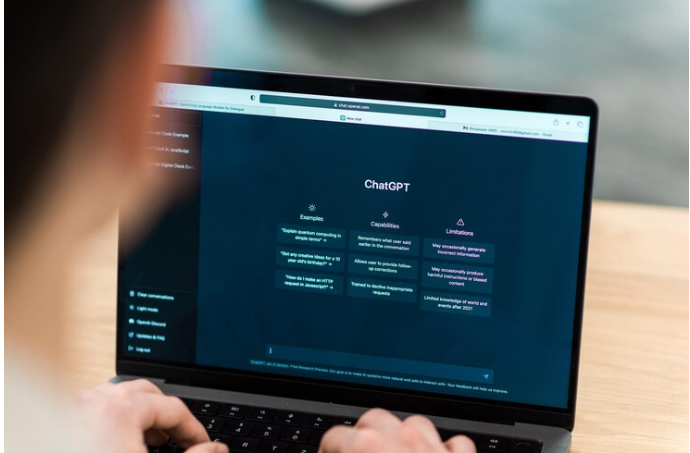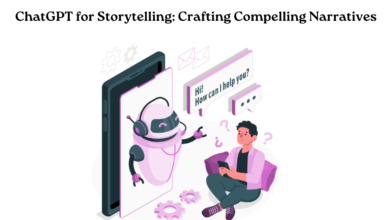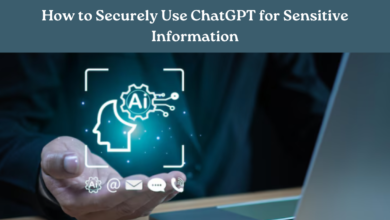Creating a ChatGPT Chatbot for Your Website: A Step-by-Step Tutorial

Integrating an artificial intelligence (AI) powered chatbot into your website in the modern digital era can significantly enhance user engagement, streamline customer support processes, and deliver personalized interactions. By incorporating a sophisticated AI model like ChatGPT, developed by OpenAI, you can elevate user engagement, streamline customer support processes, and provide customized interactions that resonate with visitors. ChatGPT stands out as an exceptional AI solution capable of generating human-like responses, making it an ideal choice for constructing conversational agents that feel natural and intuitive.
This comprehensive tutorial teaches you how to create and seamlessly integrate a ChatGPT-based chatbot into your website using Google’s Dialogflow platform. Beyond the basic setup, we delve into additional strategies for customizing, optimizing, and deploying your chatbot to maximize its effectiveness and user impact.
1. Understanding the Value of Chatbots in Today’s Digital World
The proliferation of chatbots represents a paradigm shift in customer interaction and engagement strategies. Businesses across various industries leverage AI-driven chatbots to provide real-time assistance, automate routine tasks, and deliver tailored responses that cater to individual needs. By harnessing the power of ChatGPT within a chatbot framework, you unlock the potential to create compelling conversational experiences that drive customer satisfaction and loyalty.
2. Leveraging ChatGPT for Conversational Excellence
ChatGPT, powered by cutting-edge transformer-based neural network architecture, possesses remarkable language understanding capabilities honed through extensive training on vast textual datasets. This AI prowess enables ChatGPT to emulate human-like conversational patterns, comprehend nuanced queries, and generate contextually relevant responses—an indispensable asset for crafting engaging chatbot interactions.
3. Website Requirements for Integration
Before proceeding further, ensure that your website meets the following requirements to integrate the ChatGPT-based chatbot using Dialogflow successfully:
i) Web Hosting:
Host your website on a server accessible via the internet.
ii) HTTPS Support:
Dialogflow requires HTTPS (SSL/TLS) support for secure communication between the user’s browser and the Dialogflow service.
iii) Dialogflow Integration:
Integrate Dialogflow’s JavaScript code snippet into your website to enable communication with the Dialogflow service.
iv) Server-Side Code (Webhook):
If using ChatGPT as the backend for your chatbot, set up a server-side environment (e.g., Node.js, Python Flask) to handle webhook requests and responses.
v) JavaScript Frameworks:
Consider using JavaScript frameworks like React, Angular, or Vue.js to integrate Dialogflow’s chat widget more easily into your website.
vi) Accessibility and Responsiveness:
Make your website easy to use and perform well on all devices, including desktops, tablets, and smartphones.
vii) Browser Compatibility:
Test your website and integrated chatbot across various web browsers (Google Chrome, Firefox, Safari, Microsoft Edge) to ensure compatibility.
viii) User Interface Design:
Design your website layout to accommodate the chatbot widget, considering placement, styling, and user flow.
ix) Error Handling and Logging:
Implement error handling mechanisms to capture and log any issues related to the chatbot integration for troubleshooting.
By meeting these website requirements, you will be well-prepared to integrate a ChatGPT-powered chatbot seamlessly into your website and deliver an enhanced user experience.
4. Choosing the Right Chatbot Platform
Selecting the appropriate platform is crucial for building and deploying your ChatGPT-based chatbot. While several options are available, we will focus on using Google’s Dialogflow due to its ease of use and integration capabilities with external AI models.
Step-by-Step Tutorial
Step 1: Setting Up a Dialogflow Account
-
Creating a Dialogflow Account:
Visit the Dialogflow console (console.dialogflow.com) and sign in with your Google account.
-
Creating a New Agent:
Click “Create Agent,” provide your agent’s name and default language, and then click “Create.”
Step 2: Integrating ChatGPT with Dialogflow
Let’s integrate ChatGPT into Dialogflow to power your chatbot’s conversational abilities.
-
Accessing ChatGPT:
Obtain access to the ChatGPT model through OpenAI’s platform or API.
-
Setting Up a Webhook:
In Dialogflow, configure a webhook to forward user queries to ChatGPT. This requires deploying a server that can interact with ChatGPT’s API.
Step 3: Defining Intents and Responses
-
Creating Intents:
Define various intents (user queries) that your chatbot should recognize, such as greetings, FAQs, or specific requests related to your website.
-
Configuring Responses:
For each intent, configure responses that ChatGPT will generate. These responses should be relevant and helpful to users.
Step 4: Training and Testing Your Chatbot
-
Training the Chatbot:
Train your chatbot by providing sample phrases for each intent. This helps ChatGPT understand different ways users might phrase their queries.
-
Testing the Chatbot:
Use the Dialogflow console to test your chatbot. Enter sample queries and verify that ChatGPT generates appropriate responses.
Step 5: Enhancing Your Chatbot’s Functionality
To make your chatbot more robust and user-friendly, consider implementing the following features:
-
Contextual Understanding:
Utilize Dialogflow’s context management to maintain conversational context and provide more accurate responses.
-
Entity Recognition:
Implement entity recognition to extract important information from user queries, such as dates, locations, or product names.
-
Multi-turn Conversations:
Enable multi-turn conversations to handle complex user interactions that span multiple messages.
Step 6: Customizing the Chatbot’s User Interface
The appearance and behavior of your chatbot can significantly impact user experience. Below are a few customization choices you might want to think about:
-
Chat Widget Design:
Customize the chat widget’s appearance (e.g., colors, fonts) to match your website’s branding.
-
Interactive Elements:
Implement buttons, carousels, or quick replies to guide users and provide predefined options for interaction.
-
Language Support:
Offer multilingual support to cater to a diverse audience.
Step 7: Deploying Your Chatbot
Once your chatbot is trained and tested, it’s time to deploy it on your website for live interactions.
-
Integration Code:
Obtain the integration code (JavaScript) from Dialogflow.
-
Embedding the Chatbot:
Add the integration code to your website’s HTML. This typically involves adding a ‘script’ tag.
-
Testing in Production:
Conduct thorough testing in a production environment to ensure seamless integration and performance.
5. Monitoring and Optimization
After deploying your chatbot, continuous monitoring and optimization are essential for improving its effectiveness.
-
Analytics and Insights:
Utilize Dialogflow’s analytics to track user interactions, identify bottlenecks, and optimize responses.
-
Feedback Loop:
Gather user feedback and iterate on your chatbot’s responses and capabilities based on real-world usage.
-
Performance Tuning:
Fine-tune your chatbot’s parameters and configurations to enhance response accuracy and speed.
6. Possible Errors and Troubleshooting Tips
Despite following the steps above, you may encounter some challenges during the creation and deployment of your ChatGPT-based chatbot. Here are common errors and how to troubleshoot them:
i) Webhook Integration Issues:
Ensure that your webhook server is configured correctly and accessible. Check for firewall restrictions or network issues that may prevent Dialogflow from reaching your webhook.
ii) Model Training Challenges:
If ChatGPT’s responses are not accurate or relevant, review your training data and provide more diverse examples for each intent. Consider retraining the model with additional data if necessary.
iii) Performance and Latency:
Monitor the response time of your chatbot and optimize the integration code for efficiency. Consider caching responses or implementing asynchronous processing to improve performance.
iv) Deployment Errors:
Double-check the integration code and ensure that all necessary files and configurations are correctly set up on your website. Use browser developer tools to debug JavaScript errors if the chatbot widget does not load correctly.
v) Language Understanding Issues:
If the chatbot struggles to understand user queries, refine your entity recognition setup and provide more synonyms or variations for entities. Regularly update and expand your training data to improve language understanding over time.
By anticipating and addressing these potential challenges, you can successfully create and deploy a ChatGPT-based chatbot that enhances user engagement and delivers valuable interactions on your website. Embrace the power of AI-driven conversational agents to transform your online presence and provide exceptional customer experiences in today’s digital landscape.
For more tips on how you can maximize ChatGPT, please visit www.intogeeks.com.




